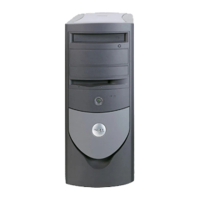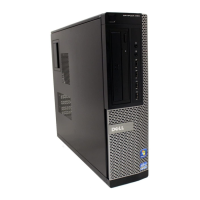Basic Troubleshooting 2-7
the tests are completed or stopped, the total number of errors is reported;
there is no error log.
The server-based diagnostics consists of the following test groups:
Coprocessor Tests — Check the math coprocessor’s numerical calculation
and error-handling abilities
CMOS Confidence Test — Checks the NVRAM for accessibility and reliabil-
ity of data storage
DMA Controller Test — Checks correct operation of the DMA controller
Timers Test — Checks the timers used by the microprocessor
RTC Test — Confirms the functionality and accuracy of the computer’s RTC
PIC Test — Generates an interrupt on each IRQ line to verify interrupt con-
troller operation
Speaker Test — Checks the functionality of the speaker by generating
tones
Video Tests — Verify proper operation of the video controller and the video
control circuitry
USB1 Tests — Check the USB interface registers and the USB controller
Serial Port 1 Tests — Check the computer’s interface with external devices
connected through serial port 1
Serial Port 2 Tests — Check the computer’s interface with external devices
connected through serial port 2
Parallel Port 1 Test — Checks several internal functions of the parallel port
Mouse Test — Checks the functionality of the mouse controller and the
operation of the mouse keys
Keyboard Tests — Verify the correct operation of the keyboard and the key-
board controller chip
Disk 0 Tests — Check the hard-disk drive controller and the storage capabil-
ity of the hard-disk drive
For a complete description of the server-based diagnostics, see “Server-Based
Diagnostics” in the online
Network Administrator’s Guide
.
+DUG'LVN²%DVHG'LDJQRVWLF V2SWL3OH[1;
6\VWHPV2QO\
The hard-disk–based diagnostics contains tests that aid in troubleshooting all
major components of the system. If it is not possible to run the server-based
diagnostics or if the server-based diagnostics fails to reveal the source of a

